Can You Burn Poison Ivy? Is It Safe?
-
Pete Ortiz
- Last updated:
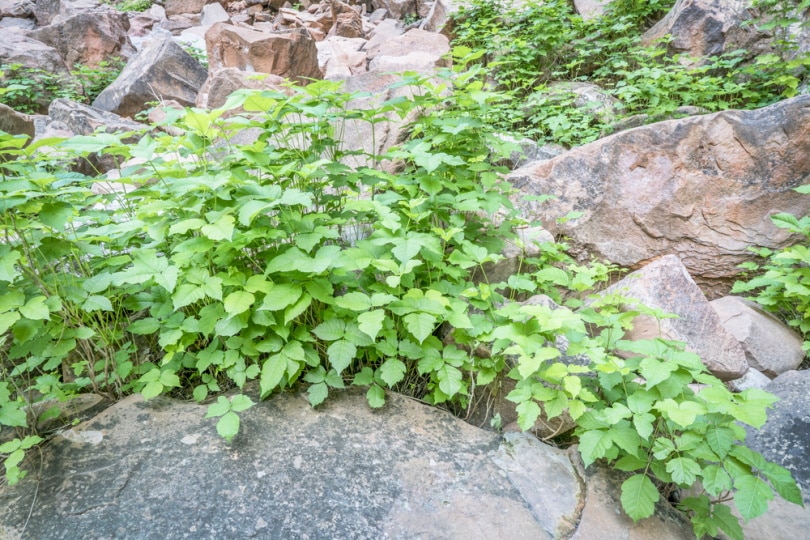
If we start talking about toxic plants1, poison ivy comes into our minds quickly. It is one of the most popular poisonous plants in the US, well known for causing rashes upon coming into contact with the skin. Touching the plant or contaminated surfaces and inhaling the fumes coming from burning poison ivy is not safe for your health in several ways.
While this article will address those effects in the following sections, we begin by looking at how to identify poison ivy in your garden or farm. Hang on as we also tip you about the best way of destroying poison ivy in your garden, plus a whole lot of information about the plant.
How to Identify Poison Ivy
Poison ivy can be quite difficult to identify. With three leaflets growing off a red stem, it resembles a young raspberry bush but without the thorns. All its leaves are jagged at the edges and pointed at the tip, but you’ll notice the middle leaflet grows off a longer stem.
Another part used to identify a poison ivy plant is its flower. The plant blooms from May to late July with tiny and yellowish, greenish, or whitish flowers. They bloom in clusters, with each flower having five petals. Often, the almost round flower never grows larger than ½ inch in diameter, and they bloom into seedful berries two months later.
Whereas their roots grow beneath the ground, in some species, such as the eastern poison ivy, they may appear above the ground. These hairy, aerial roots help them cling to trees, walls, and fences for support.

What Would Happen If You Burned Poison Ivy?
Because it is irritative to the skin, most gardeners prefer burning poison ivy in a bid to destroy them. What they fail to understand is that burning it is a potentially dangerous option that should be avoided by all means.
Poison ivy contains an oily resin known as urushiol that’s allergic to humans – it’s the same chemical that causes poison ivy rash. Poison ivy reaction can be acquired in three ways:
- Inhaling smoke from burning poison ivy. The poisonous substance can still be effective if burned and inhaled. Besides irritating the skin, it can lead to lung or nasal problems.
- Touching the plant. Touching the stem, leaves, berries, or roots of a poison ivy plant can cause a skin reaction.
- Touching contaminated objects. Because the oily resin is very sticky, it tends to stick to any surfaces it comes in contact with. If you walk through them, they may stick to your shoes and later get to your hands when taking them off. You may then transfer the urushiol to your face or body later, triggering the skin rashes.
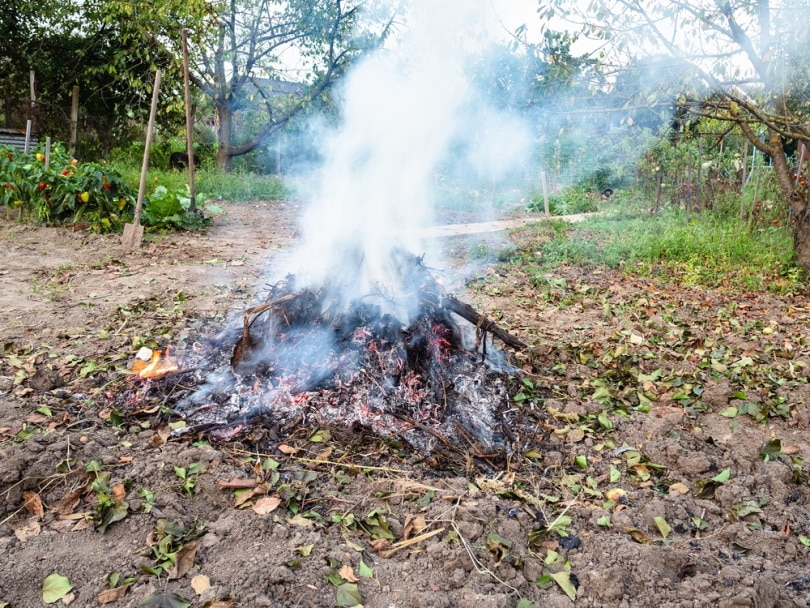
Symptoms of a Poison Ivy Rash
Between 12 and 48 hours of exposure to poison ivy, you are likely to experience the following symptoms:
- Itching on the affected skin surface
- Redness
- Swelling
- Blisters or rashes
- Fever
- Difficulty breathing if you inhale its smoke
Because the plant may brush against your skin fast, the rashes or blisters usually appear in a straight line. However, they may become more spread out if you touch a piece of contaminated cloth or pet fur – the same applies if you spread the urushiol to your face and body using your hand.
In most cases, the symptoms may last for as long as three weeks. You are recommended to seek immediate medical attention if the following happens:
- You experience breathing difficulty after inhaling poison ivy smoke.
- You develop an extreme fever (If it exceeds 100° F or 37.8° C).
- The poisonous substance affects your eyes, mouth, and genitals.
- The blisters start oozing pus.
- The rash exceeds a few weeks.
- The skin keeps swelling.

Is Poison Ivy Contagious?
Poison ivy isn’t contagious. A reaction can only occur on the skin surface with which its sticky resin comes in contact. For example, if you have a rash on the back of your palm and you rub it on your face, you won’t spread the rash. An exception is if the oil remains in the back of the palm. That’s why you must wash your hands with soap and warm water after handling poison ivy.
The rash may, however, develop and spread across other parts of the body with time. This doesn’t mean that poison ivy is contagious but rather dangerously harmful. Even if the blisters or rashes break, the oozing fluid cannot spread the rash because it isn’t urushiol.
Also, it’s worth noting that poison ivy rash cannot be transferred from one person to another by touch. The only case in which one can spread poison ivy rash is if the oily, poisonous resin hasn’t been washed away.
Poison ivy resin that sticks to pet fur or clothes can cause a skin reaction even after several years. For this reason, you are advised to thoroughly wash clothes, pets, and other surfaces to which the substance can stick. But we all know the best measure is prevention.
So, how do we prevent ourselves from coming into contact with poison ivy, or spreading it?
5 Ways to Prevent Poison Ivy Rash
1. Avoid the Plants
Learn how to identify poison ivy in all seasons so you can avoid them. When hunting, hiking, or engaging in any other activity that might lead to exposure, try staying on clear pathways as much as you can.
Also, when going outdoors, ensure you have socks, pants, and long-sleeve shirts on. You should keep your pets away from poison ivy-infested areas as well because once poison ivy resin sticks to their fur, you are at risk of suffering from its effects.
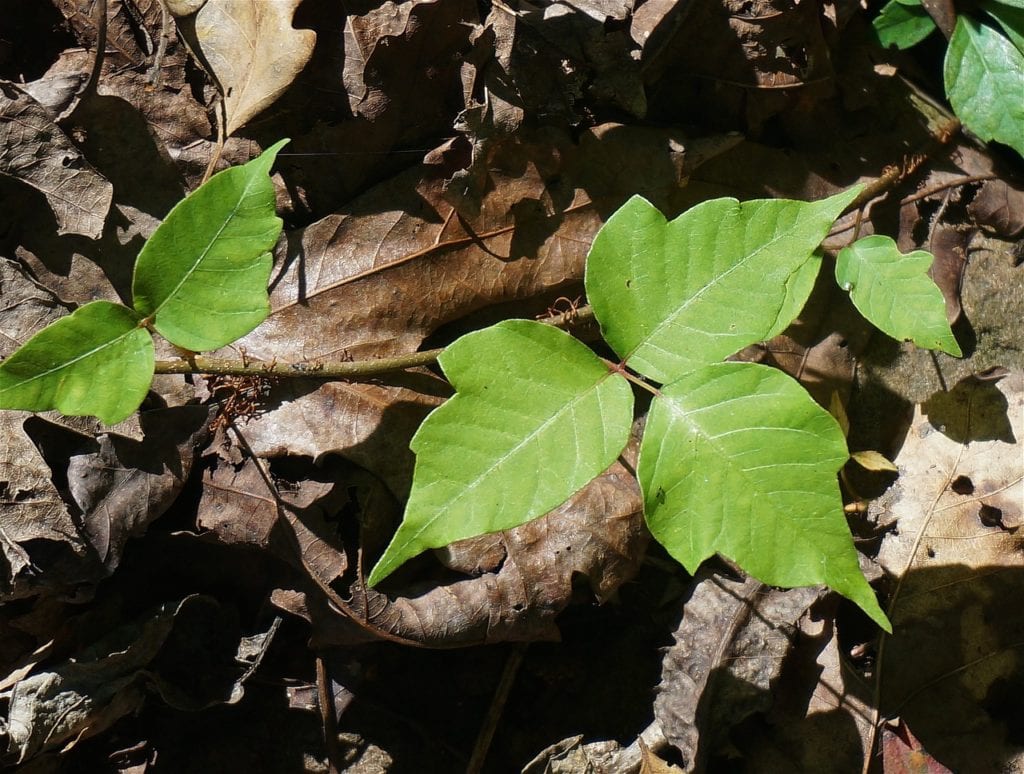
2. Wash Your Pet and Your Skin
If you suspect that you came in contact with poison ivy, you should wash your hands within 30 minutes of exposure. This will not only reduce the severity of the effects but also eliminate the chances of spreading to other people.
Ensure you scrub under your fingernails carefully too. If you have the company of a pet, do not hesitate to bathe it – but remember to put on a pair of gloves in the process.
3. Clean All Contaminated Surfaces
Perhaps poison ivy oil got stuck on your clothes, shoes, garden tools, jewelry, or any other outdoor gear. In that case, you must wash them promptly in warm soapy water – a washing machine would be even more ideal.
While most people prefer throwing away contaminated jackets, gloves, and other garden materials without washing them, they fail to understand that poison ivy remains potent for up to three years.
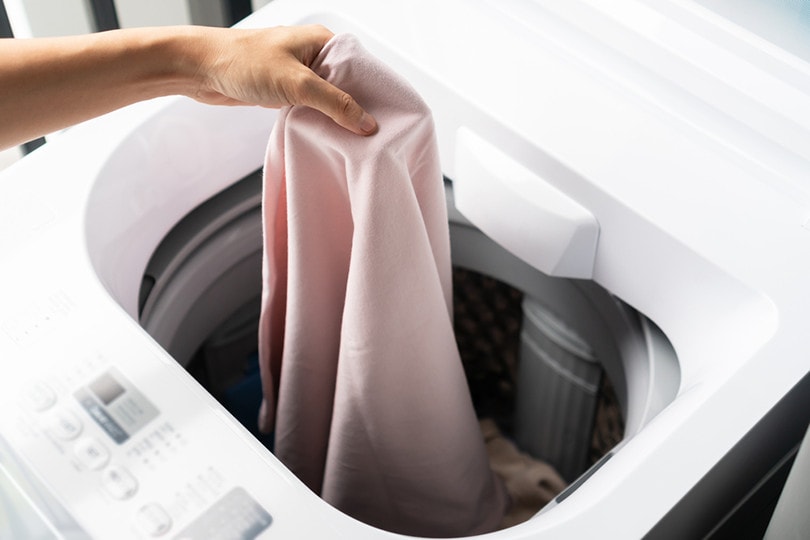
4. Apply a Barrier Cream
There are several skin products that aid to counter poison ivy rash. For instance, you can purchase an over-the-counter solution that acts as a barrier between the oily resin and your skin. Alternatively, you can compress a wet, soft towel upon the affected area or dip it in cool water to help relieve the itch.
5. Destroy the Poison Ivy Plants on Your Farm
Killing the plant is ultimately the best way of preventing poison ivy rash. While burning it seems the best way of destroying this poisonous plant, contrarily, it is perhaps the most dangerous way of handling it. So, how do you get rid of poison ivy?
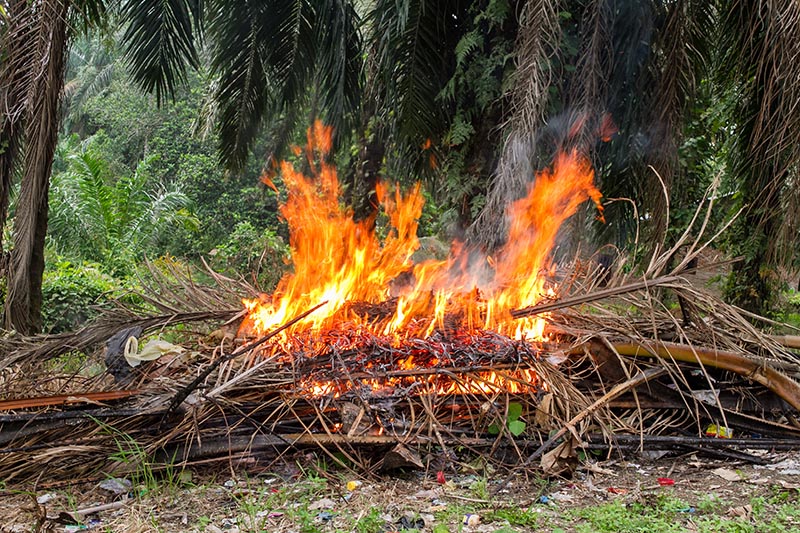
3 Ways to Get Rid of Poison Ivy Permanently
There are three well-known ways of destroying poison ivy effectively:
1. Using Commercial Herbicides
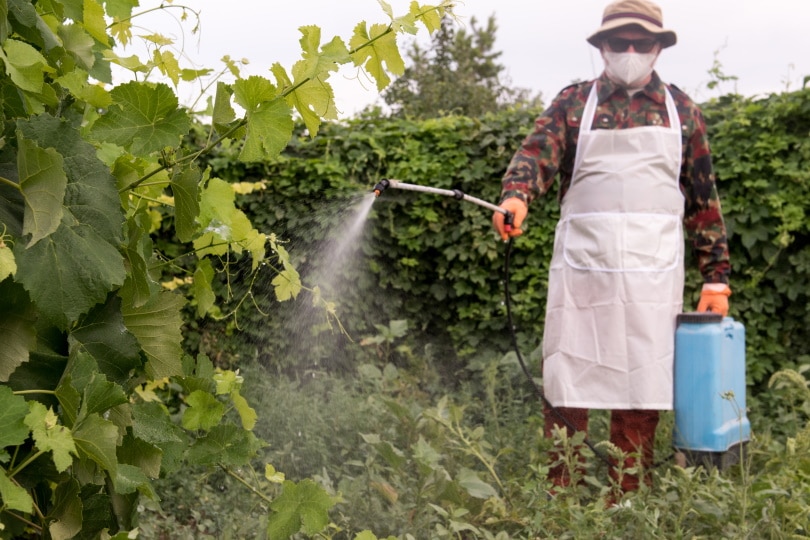
Despite being ecologically unfriendly, spraying poison ivy with herbicides is the fastest way of destroying them. What makes it ideal is the fact that you can use a small amount to control them over a large area.
One popular herbicide that gardeners love is glyphosate: it infiltrates the plant’s complex root system, killing it entirely. Before spraying them in your garden, you must conduct due diligence to ensure they won’t harm other garden plants.
2. By Uprooting
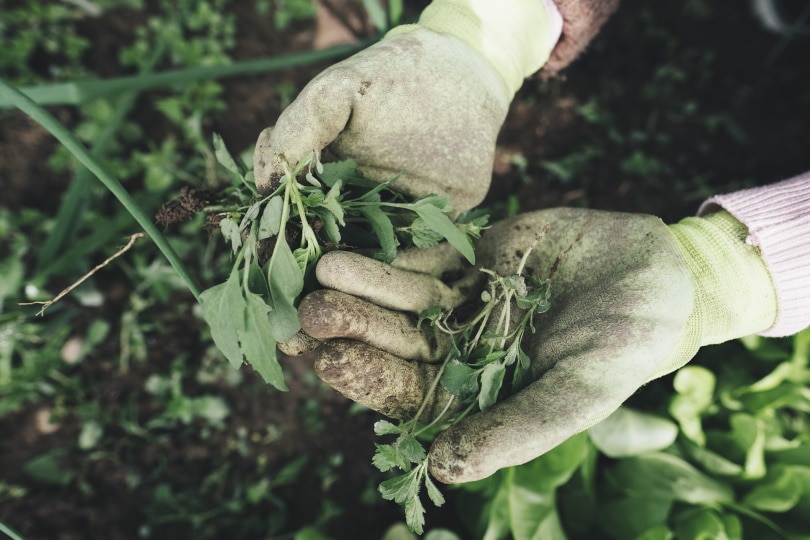
The most surefire way of controlling poison ivy is by uprooting them one by one. Although it consumes a lot of energy and time, it ensures the weeds never grow back while also guaranteeing zero disturbance to the soil organisms.
Careful weeding requires you to wear gloves and long sleeves. Also worth noting is that uprooted plants can still secrete the poisonous urushiol. To eradicate any chances of itchy skin rashes, ensure you remove all traces of roots using a sharp trowel, wrap them in a plastic bag, and dispose of them safely. You can as well dig a hole in the ground and bury them – they should decompose after some time.
3. Using Homemade Weed Killers
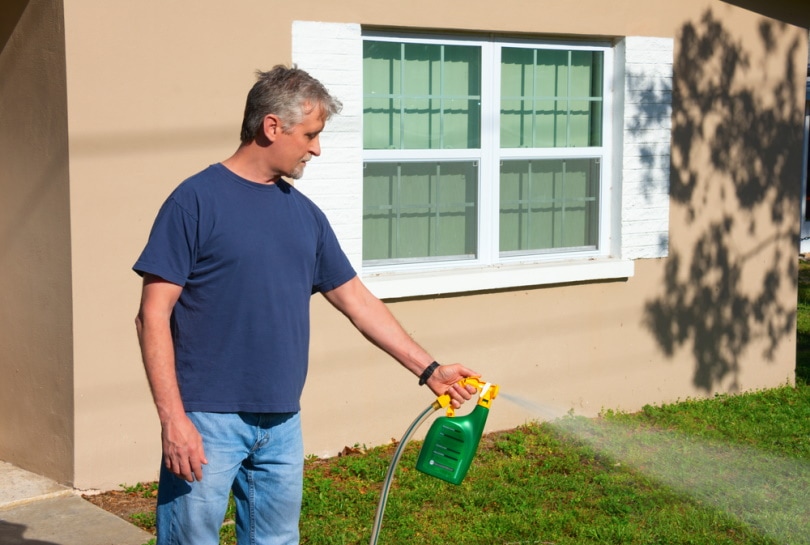
Our third method is a cultural one. You can dissolve one tablespoon of dish soap, one tablespoon of white vinegar, and one cup of salt in a 20-liter bottle of water. If you spray this concoction evenly on poison ivy, it should be able to kill it.
Conclusion
You don’t want to experience the effects of poison ivy, such as skin rash, swelling, and breathing difficulties. Such effects come about when you touch the plant or burn them and inhale the smoke. That being the case, your best course would be to get rid of poison ivy in your garden by uprooting, using homemade solutions, or commercial herbicides.
Otherwise, burning the plant is not recommended.
Featured Image Credit: marekuliasz, Shutterstock
Contents



